Series Collaborating to Develop Mathematical Ideas: Applying Understanding of Ratios to Fractions
Math.6.RP.A.2
| Common core State Standards
- Math: Math
- 6: Grade 6
- RP: Ratios & Proportional Relationships
- A: Understand ratio concepts and use ratio reasoning to solve problems
-
2:
Understand the concept of a unit rate a/b associated with a ratio a:b with b not equal to 0, and use rate language in the context of a ratio relationship. For example, \"This recipe has a ratio of 3 cups of flour to 4 cups of sugar, so there is 3/4 cup of flour for each cup of sugar.\" \"We paid $75 for 15 hamburgers, which is a rate of $5 per hamburger.\"
Expectations for unit rates in this grade are limited to non-complex fractions.
Math.6.RP.A.3
| Common core State Standards
- Math: Math
- 6: Grade 6
- RP: Ratios & Proportional Relationships
- A: Understand ratio concepts and use ratio reasoning to solve problems
-
3:
Use ratio and rate reasoning to solve real-world and mathematical problems, e.g., by reasoning about tables of equivalent ratios, tape diagrams, double number line diagrams, or equations.
a. Make tables of equivalent ratios relating quantities with whole-number measurements, find missing values in the tables, and plot the pairs of values on the coordinate plane. Use tables to compare ratios.
<br />
b. Solve unit rate problems including those involving unit pricing and constant speed. For example, if it took 7 hours to mow 4 lawns, then at that rate, how many lawns could be mowed in 35 hours? At what rate were lawns being mowed?
c. Find a percent of a quantity as a rate per 100 (e.g., 30% of a quantity means 30/100 times the quantity); solve problems involving finding the whole, given a part and the percent.
d. Use ratio reasoning to convert measurement units; manipulate and transform units appropriately when multiplying or dividing quantities.
Math.7.RP.A.2
Common core State Standards
- Math: Math
- 7: Grade 7
- RP: Ratios & Proportional Relationships
- A: Analyze proportional relationships and use them to solve real-world and mathematical problems
-
2:
Recognize and represent proportional relationships between quantities.
<br />
a. Decide whether two quantities are in a proportional relationship, e.g., by testing for equivalent ratios in a table or graphing on a coordinate plane and observing whether the graph is a straight line through the origin.
b. Identify the constant of proportionality (unit rate) in tables, graphs, equations, diagrams, and verbal descriptions of proportional relationships.
c. Represent proportional relationships by equations. For example, if total cost t is proportional to the number n of items purchased at a constant price p, the relationship between the total cost and the number of items can be expressed as t = pn.
<br />
d. Explain what a point (x, y) on the graph of a proportional relationship means in terms of the situation, with special attention to the points (0, 0) and (1, r) where r is the unit rate.
Save to My Resources
PLEASE CREATE A NEW ACCOUNT OR LOG IN TO ACCESS THIS CONTENT
Enjoy your first video for free. Subscribe for unlimited access.
Have questions about subscribing?
Click Here to learn more about individual subscriptions.
Click Here to learn more about School and Institution access.
Discussion and Supporting Materials
Thought starters
- How does Ms. Morey build off of her students' previous understanding?
- Why does Ms. Morey give her students independent think time?
- How does Ms. Morey create opportunities for students to share and learn from each other?
School Details
Enumclaw Middle School550 Semanski Street
Enumclaw WA 98022
Population: 498
Data Provided By:

Teachers
Crystal Morey
Jana Dean
Wendy L. Hughes
Newest
|
4 MIN
|
5 MIN
|
5 MIN
UNCUT CLASSROOMS
| TCHERS' VOICE
English Language Arts
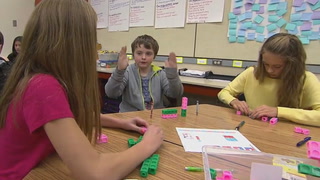
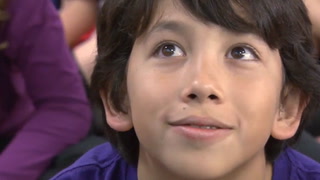
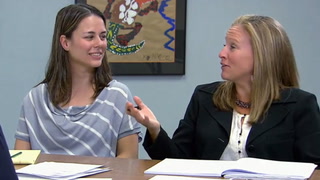


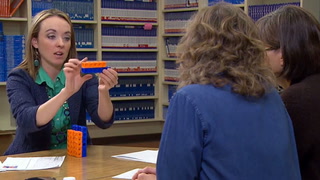
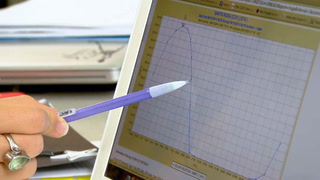
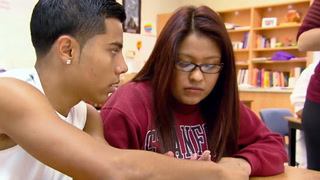
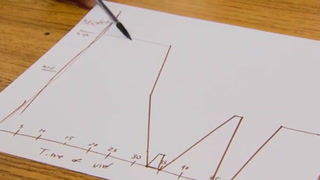
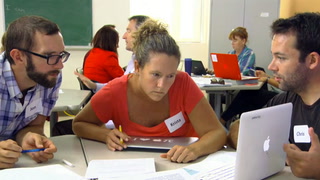








8 Comments
cara bani Jun 18, 2018 6:50am
Des Duthie Mar 5, 2018 2:13am
Karen Phillips Jul 18, 2017 10:08pm
shafie hassan Jun 25, 2016 9:31am
Crystal Morey May 12, 2016 4:30pm